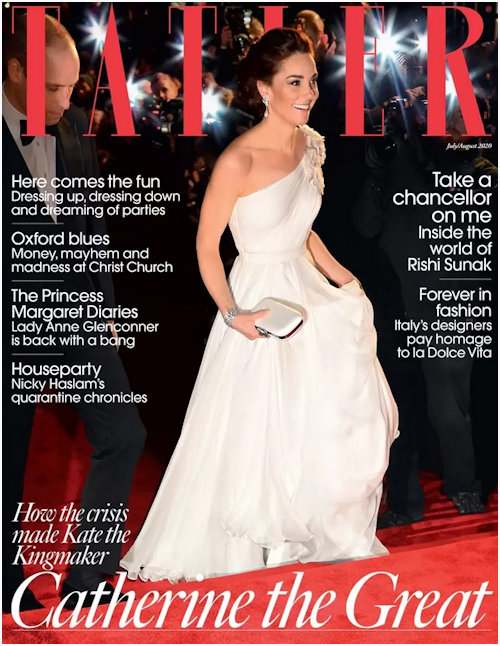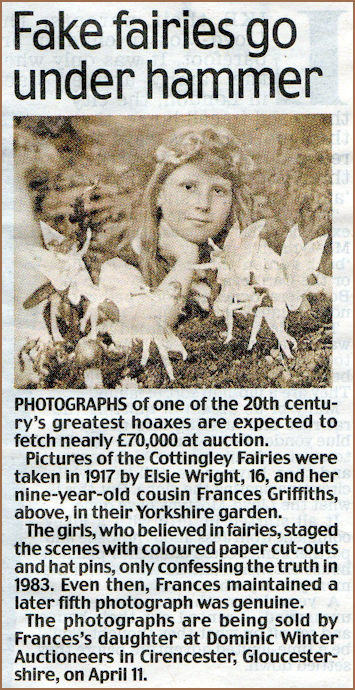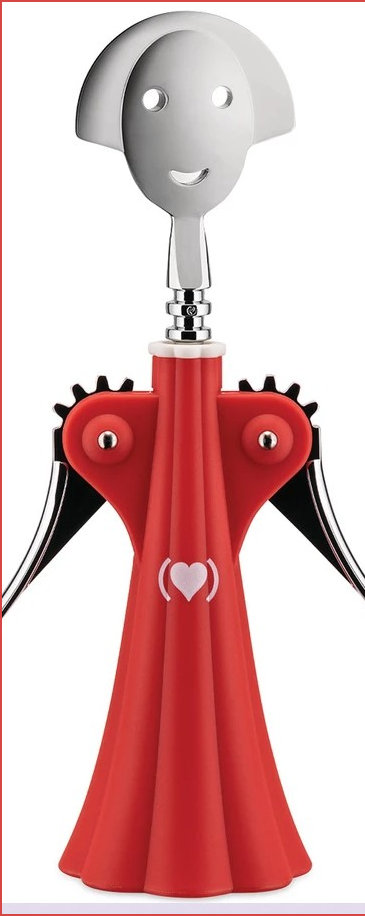Back to Home Page / Arts Home / Icons Narrative
Home / Arts / Advertising / Cinderella / Dance / Fabergé / Giselle / Imagery / Iconography / Lalique / Marmite / Theatre / Tribute
Iconography
How would this differ from imagery? I think that there is a whole world of iconography out there from Marmite to the VJ Day Kiss and anything that really sticks in someone's mind - not to be mistaken for ubiquity! Because some subjects are serious and others frivolous they are divided into Timeline (serious) and Alphabetical (just for fun)
The Uffington White Horse
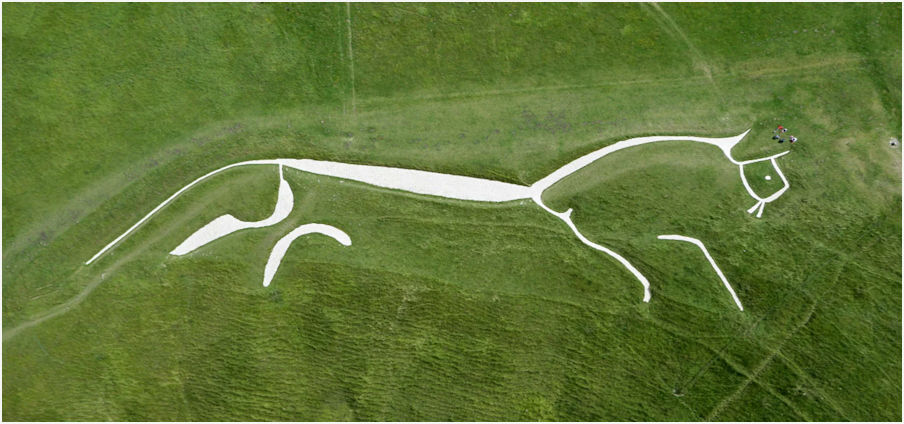
I have put the Uffington White Horse at the top because it has been a source of fascination for me for years! It really is a remarkable design (for its time) and the its upkeep is a phenomenal effort by the authorities and volunteers. The Horse had to be camouflaged during WWII as it was used by the enemy to plot their airborne attacks! - Imaged sourced from and © of the National Trust with thanks
Read more : Smithsonian Magazine | Atlas Obscura | English Heritage
Timeline
2020 - Catherine's Cambridge Rainbow
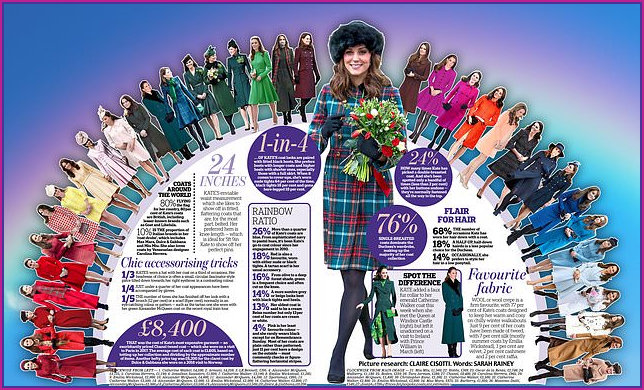
The full article as it appeared in the Daily Mail on 10th December 2020
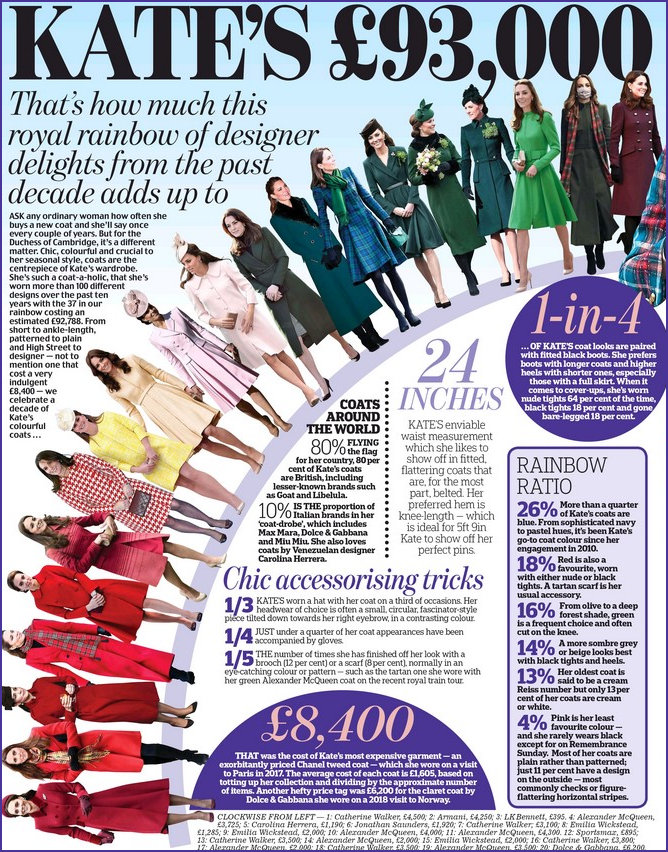
One half of the article as seen in the Daily Mail - I'll keep searching for the second half!
2020 - Miffy - Celebrates her 65th Birthday
The Creation of Miffy
In 1955, the Bruna family were on holiday in the seaside village of Egmond aan Zee. Every night, Dick Bruna would tell his eldest son Sierk a bedtime story about a white bunny that lived in the garden of their holiday cottage. That white bunny inspired Miffy. Her official birthday is on 21 June and she'll be turning 65 this year! The announcement of her birth is on display in Dick Bruna's studio.
The Naming of Miffy
For people who speak Dutch, "nijntje" is a logical contraction of "konijntje" (meaning "little bunny"). But things are different outside the Netherlands, where "nijntje" is difficult to pronounce for most people. The word for "bunny" is also different in every language, so Dick Bruna went in search of an international name for his little bunny. Together with his English translator, he came up with the name "Miffy". It's the kind of sound a bunny might make, but it has no special meaning. It's also a name that is easy to pronounce in any language.
![]()
Happy 65th Birthday Miffy - image sourced from with thanks and © of miffy.com
![]()
Miffy and friends - image sourced from and © of Mercis.bv as seen on little-clogs-holidays.co.uk
![]()
Miffy's official 65th Birthday Portrait - image sourced from with thanks and © of miffyshop.co.uk
![]()
A chorus of Miffys as she appears on the official Fb page - image sourced from and © of Mercis.bv as seen on Facebook
2020 - The Red Arrows & La Patrouille de France
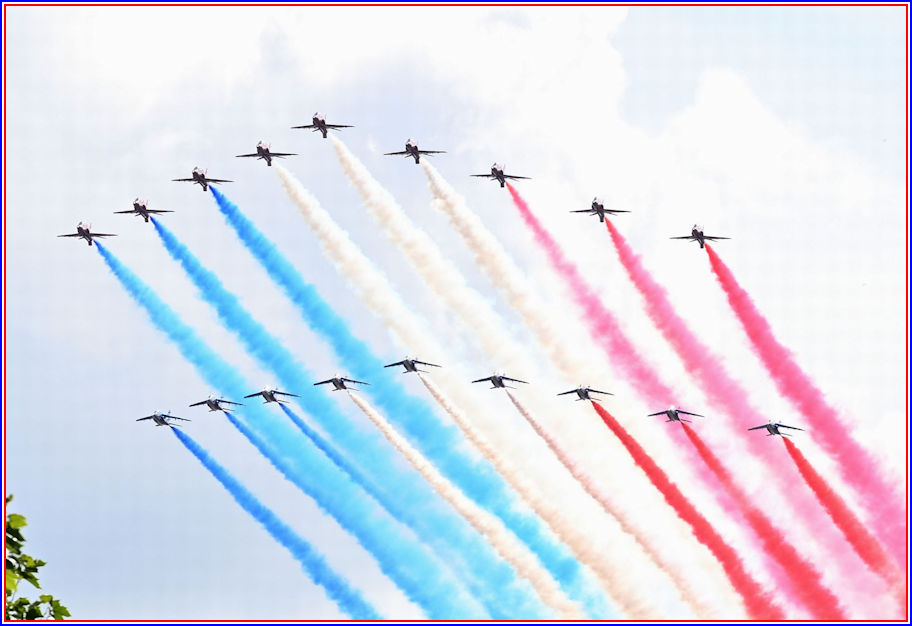
Who can ever tire of the perfection of the 'Red Arrows' in flight? Here they are joined by their French counterparts in an historic fly past - "Red Arrows and Patrouille de France perform a flypast over The Mall to commemorate the appeal of the 18th June speech by Charles De Gaulle on June 18th, 2020 in London" - image and dialogue courtesy & © of Lincolnshire Live
The Red Arrows and their French counterparts La Patrouille de France have flown across England to honour the heroes of the French Resistance and to mark 80 years since Charles De Gaulle's historic speech. The French president Emmanuel Macron is here to commemorate the 80th anniversary of a speech made by Charles De Gaulle during the Second World War. The German Army had invaded and occupied France, and General De Gaulle had fled to London to avoid arrest. He broadcast a speech - now known as L'Appel - to the French nation, urging people not to give up. He said: "whatever happens, the flame of the French resistance must not be extinguished and will not be extinguished."
Boris Johnson and Emmanuel Macron watched the flypast to mark the anniversary of the L'Appel. The display left RAF Brize Norton in Oxfordshire at 4.40pm and flew over London, before landing at RAF Scampton at 5.27pm. Mr Macron praised the support the fledgling forces of Free France received from the UK, especially their "first weapon, a BBC microphone" used by General Charles de Gaulle to give his historic address. Mr Macron, spoke in the shadow of General de Gaulle's statue in Carlton Gardens, in central London, where the Free French had their headquarters. He said: "Yes, Britain gave shelter to France. "This is where de Gaulle was able to form the first ranks of the French army which would go on fighting. The soldiers of London. "This is where de Gaulle was able to call on the French people to join the resistance. The soldiers of the shadows. "Because 80 years ago today, on June 18 1940, the United Kingdom gave Free France its first weapon, a BBC microphone. "So the airwaves carried de Gaulle's determined words and spirit of resistance, which built a bridge across the Channel for those refusing to be enslaved or give up their freedom." Source : Lincolnshire Live
2020 - Catherine silences the 'Tatler'
![]()
"One of the claims that most angered the Cambridges was the comparison of 'perilously thin' Kate to Princess Diana, who famously struggled with eating disorders throughout her life" - strapline and image as seen in the Daily Mail/Mail Online and image - © PA
What better image to portray the Cambridges? - We all know she cooks for the kids and 'kept house' for William for many years before their marriage!
2020 - Catherine the Great
Catherine, Duchess of Cambridge on the cover of the July/August 'Tatler' Magazine
HRH The Duchess of Cambridge is crowned Catherine the Great on the July/August cover
Kate Middleton's star is going stratospheric as the country looks to the monarchy for morale. Anna Pasternak charts her ascent
By Anna Pasternak - Monday 25th May 2020
Has the Duchess of Cambridge suddenly become one of the most influential women in the world?
So the headlines screamed at us and then produced a mealy-mouthed piece by that self-styled 'doyenne' of all that is royal Anna Pasternak (who has such respected forefathers!) - The Duke and Duchess have asked for the article to be taken down, which it may or may not be so I have 'preserved' it so that it can be seen for the worthless piece of fiction that most of it is!
Was this prompted by the earlier plaudits from America which had Catherine top of the 25 'Coolest Females' as voted for in the ES Insider Newsletter?
Royals & Society
Kate Middleton tops list of 'coolest females of the moment' in new poll
Meghan Markle and Queen Elizabeth also earned spots in the top 25
by Marissa DeSantis New York
The Duchess of Cambridge has earned a new addition to her title - the coolest female of the moment.
In a poll commissioned by Perspectus Global, which conducts research for PR agencies, Kate was voted the "coolest and most inspiring" of 25 women. Researchers asked 2,000 British women to vote in the poll, taking into consideration what made a person a role model to them in the first place. "More than half of the women polled said a strong sense of their own identity (57 percent) was key," a press statement from Perspectus Global stated. Another 43 percent of the women polled said "caring for others was vital," and just over 30% named empowering other women and being humble as their top coolest trait.
Coolest Females of the Moment:
1.The Duchess of Cambridge - 23% | 11. Beyoncé - 11% | 21. Oprah Winfrey - 6%
2. Michelle Obama - 21% | 12. Phoebe Waller Bridge - 10% | 22. Lucy Bronze - 6%
3.The Queen - 20% | 13. Alex Scott - 10% | 23. Reese Witherspoon - 5%
4. Billie Eilish - 20% | 14. Taylor Swift - 9% |24. Melinda Gates – 5%
5. Adele – 19% | 15. Meghan Markle - 9% | 25. Gigi Hadid – 5%
6. Greta Thunberg - 14% | 16. Meryl Streep - 8%
7. Jacinda Ardern – 13% | 17. Chrissy Teigen - 8%
8. Katy Perry - 12% | 18. Emilia Clarke - 7%
9. Emma Watson - 12% 19. Rachel Riley - 7%
10. Kylie Jenner - 11% | 20. Hilary Clinton – 6%
2019 - April (1st) - but this is no 'April Fool'
For those aficionados of the Cottingley Fairies such as myself and Sir Arthur Conan Doyle - to own one of these truly iconic images would be a real treasure!
The papers picked up on the sale on the 1st of April, but this is no 'Fool' as the proposed Sales were mentioned on the radio on 31st March
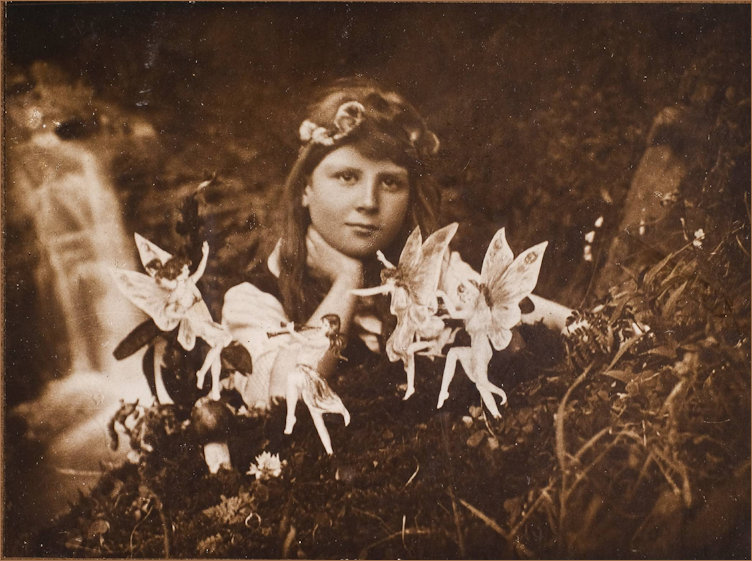
The Cottingley Fairies. Alice and the Fairies, photograph of Frances 'Alice' Griffiths, taken by her cousin Elsie Wright, July 1917, printed by Harold Snelling, circa 1920, vintage sepia gelatin silver print photograph, 11 x 15cm, mounted on original brown card with embossed brown title and copyright stamp to lower margin. Source : Dominic Winter
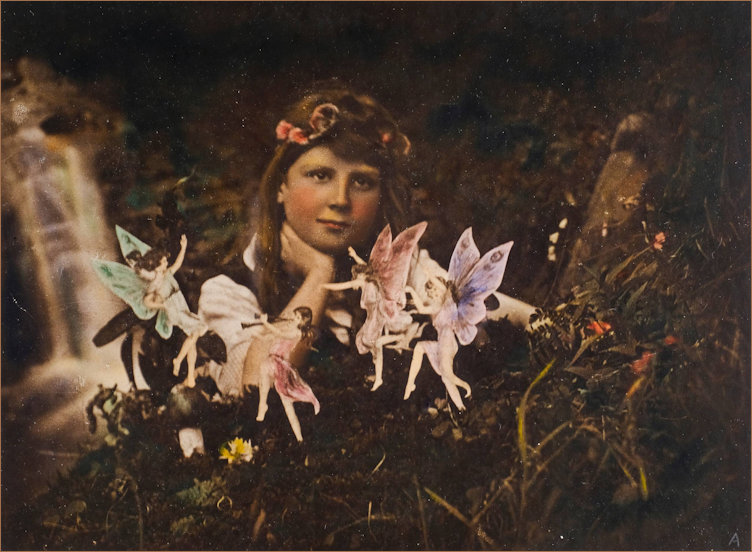
The Cottingley Fairies. Frances and the Fairy Ring, 1917, printed by Harold Snelling circa 1920, a very rare vintage hand-coloured gelatin silver print of the photograph taken by Elsie Wright of her cousin Frances Griffiths, pencil letter 'A' to lower right corner, contemporary card mount, 14 x 19.5cm
It is unknown how many of these hand-coloured versions of the photographs were produced but from their extreme scarcity the numbers must have been very small. It is known that a woman known to Edward Gardner as 'Elsie B' coloured some magic lantern slides made from the Cottingley Fairies photographs for Edward Gardner in October 1920. Whether she was responsible for the colouring of these photographs also is not known. Source : Dominic Winter
The fairy photos that fooled a nation go up for auction: Shot by two young girls, the Cottingley Fairies photographs became one of the greatest hoaxes of the twentieth century and are now expected to fetch £70,000
- The Cottingley Fairies photographs set out to prove the existence of fairies
- The pictures were taken by Elsie Wright, 16, and cousin Frances Griffiths, nine
- It is considered one of the most successful hoaxes of the 20th Century
- 14 lots of period photographs are expected to fetch up to £70,000 at auction
By Henry Martin For Mailonline | Published: 02:48, 31 March 2019 | Updated: 18:49, 31 March 2019
Photographs of one of the greatest hoaxes of the 20th century are expected to fetch up to £70,000 when they are sold at auction. Pictures of the Cottingley Fairies were taken in July and September 1917 by 16-year-old Elsie Wright and her nine-year-old cousin Frances Griffiths in the village of Cottingley, West Yorkshire. The two girls believed in fairies and set out to prove their existence, little knowing that their practical joke would stir such controversy and fool such eminent figures as Sherlock Holmes creator Sir Arthur Conan Doyle. Vintage images of the hoax are rare and 14 lots of period photographs and a camera - much of which was provided by Frances' daughter Christine Lynch, 88 - will be going on sale at Dominic Winter Auctioneers in Cirencester, Gloucestershire on April 11. The girls borrowed Elsie's father's Midg quarter-plate camera and used coloured paper cut-outs and hit pins to stage the scenes near the stream in Elsie's garden. While Elsie's father, a keen amateur photographer who developed the prints, never doubted they were fakes, his wife Polly was a believer. In 1919 she took prints of the two photographs to show members of the Theosophical Society in Bradford where they were giving a lecture on fairy life. During 1920 Conan Doyle, a committed and leading spiritualist believer, became aware of the photographs and wanted to use them for an article on fairies for The Strand Magazine. In the summer of 1920, after their initial success three years earlier, the youngsters managed to 'capture' three more images of themselves with fairies.
The story has rumbled on intermittently ever since and is considered one of the most bizarre and successful photographic hoaxes of the last century. Elsie and Frances only confessed that the photographs had been faked in 1983, Frances even then maintaining the fifth photograph, The Fairy Bower, was genuine. Frances' daughter Christine Lynch said her mother always maintained that image was genuine but had taken it accidentally. 'My mother was glad the truth came out in the end,' Mrs Lynch said. 'She never thought she could take photographs of the fairies and she saw the grass had been shaped into a semi-circle nest. 'Without thinking she took out the camera and set the timer, distance and exposure and it was only when it was developed, she saw there was actual fairies on it.'
The 88-year-old, who lives in Belfast, said that with the 100th anniversary approaching of The Fairy Bower it was time to sell. 'I'm not sad to sell them and it's time to do it and with 100 years coming up I thought it was a good time for them to go,' she said. 'It's time they went to a museum where someone else can see them and enjoy them. They haven't been on view at all so it's nice for someone else to see them.' Mrs Lynch said the deception had affected her mother her whole life, but she rarely spoke about it. 'My mother was only nine at the time and she was a very intelligent girl but very vulnerable,' she said. 'Elsie had the idea of faking the photographs of the fairies and it was only meant to be to get her out of trouble. 'It stressed her all her life about those fake photographs because it was only meant to be for the family. 'Elsie swore her to secrecy, and she said it ruined her life because she was looking over her shoulder the whole time. 'As a little girl in 1920 she was not used to publicity and she didn't like it at all, and it haunted her. 'She didn't like the dishonesty of it. She knew she had seen them, she knew they were fakes but she knew the last one was genuine, so she didn't talk about it at all with me.'
The photographs will go under the hammer at Dominic Winter Auctioneers in Cirencester, Gloucestershire on April 11. Auctioneer and photography specialist Chris Albury said: 'I think the contact prints of the fairies are incredibly significant photographs within the context of this remarkable story. 'The first one of Frances and the Fairy Ring is perhaps the most important single photograph in existence relating to this drama. 'Small numbers of the first two photographs were made by Arthur Wright from the original glass plate negatives and these do not seem to have survived. 'This one was Frances' own copy and perhaps the most perfect original example still in existence.'
Item Overview
![]()
Description:
* The Cottingley Fairies. A set of of five 'copyright' photographs of the Cottingley Fairies taken by Frances Griffiths and Elsie Wright in 1917 and 1920, printed by Harold Snelling at his Harlow studio, 1921, the first a sepia gelatin silver print photograph of 'Frances and the Fairies', 16 x 21cm, the second a sepia gelatin silver print photograph of the third Cottingley Fairies photograph 'Frances and the Leaping Fairy', 21 x 16.5cm, the third and fourth being the last two photographs in the series, 'Fairy with Posy' and 'The Fairy Bower', all but the third being rare 'cropped' prints, each 21.5 x 16.5cm, all on original brown card mounts with copyright ink stamp to lower margin, the fourth from the series with 'This is my copyright' stamp to mount verso, mounts 20.5 x 28cm or the reverse, together with a vintage sepia gelatin silver print of the second photograph in the series, 'Iris and the Gnome', the photograph taken 1917 but printed by Harold Snelling circa 1920, printed on white paper with a small margin and mounted on card with embossed caption beneath, image size 14.5 x 10.5cm, mount 20 x 15cm (Qty: 5)
Notes:
The story of the Cottingley Fairies, one of the greatest photographic hoaxes of all time, is now over a century old, but continues to capture the public's imagination with new books about the subject still being published. Vintage photographs of the hoax are surprisingly rare and we are delighted to be able to offer fourteen lots of period photographs and a camera, the first six lots coming directly from the daughter of Frances Griffiths, the younger of the two cousins who first perpetrated the hoax back in 1917. The first two photographs were taken in July and September 1917 by 16-year-old Elsie Wright (1901-1988) and her cousin 9-year-old Frances Griffiths (1907-1986), in the village of Cottingley, near Bingley in Yorkshire. The two girls, like so many children then and now, believed in fairies and set out to prove their existence, little knowing that their practical joke would stir such controversy and fool such eminent figures as Sherlock Holmes creator Sir Arthur Conan Doyle. Borrowing Elsies fathers 'Midg' quarter-plate camera, and with the use of coloured paper cut-outs and hat pins they staged their scenes near the stream at the end of Elsies garden, first showing Frances with four dancing fairies, and then, two months later, Elsie seated with an eighteen-inch tall dancing gnome. The resultant photographic prints that an incredulous Arthur made from the glass plates were circulated in small numbers to family, neighbours and friends, but soon after were forgotten as the war ended and the girls grew up and parted from living in the same house. While Elsies father, Arthur Wright, a keen amateur photographer who developed the prints, never doubted they were fakes, his wife Polly was a believer and in late 1919 she showed them to members of the Theosophical Society in Bradford where they were giving a lecture on fairy life. From there things spiralled out of control, first through the enthusiastic belief of leading society member Edward Gardner, who used photography expert Harold Snelling to produce 'enhanced' photographic prints of them to be sold at Gardners theosophical lectures in 1920. It was in the spring of 1920 that Conan Doyle, a committed and leading spiritualist believer, became aware of the photographs who, having liaised with Gardner and become sure of their authenticity, then wanted to use them for an article on fairies he had been commissioned to write for The Strand Magazine . Gardner and Doyle sought further expert opinions from the photographic companies, while Gardner met the Wright family and organised two 'Cameo' quarter-plate cameras and 24 plates for the girls to try and capture more photographs of the fairies. During the wet August of 1920 the youngsters managed to capture three more images of themselves with fairies. Following the publication of Conan Doyles article a great public controversy raged with leading scientists and writers voicing their opinions in support of and against the truthfulness of the photographs. The story has reverberated intermittently ever since, in both print and on film, and is considered one of the most bizarre and successful photographic hoaxes of the last century. It was only in the 1980s that Geoffrey Crawley, a photographic expert and journalist for BJP (British Journal of Photography) was able to debunk the hoax in a series of articles with both Elsie and Frances finally confessing. However, Frances always maintained that the fifth and final photograph of 'Fairies and their Sun-Bath' was genuine, a belief that is held by her daughter Christine Lynch, the consignor of lots 333-338. Frances's own account of the story was finally published as Reflections on the Cottingley Fairies (JMJ Publications), including additional material by her daughter Christine. Provenance: Mrs Christine Lynch, daughter of Frances Griffiths, and given to the family from the collection of Edward Gardner. A rare and possibly unique group of this full set of five Cottingley Fairies photographs with excellent provenance and association. The second photograph of 'Iris and the Gnome' has been included to make the full set, the matching larger version having gone missing from France's family in the 1970s.
2018 - 'Metropolis' Memorabilia Auction
A still used in Queen's 1984 'Radio Ga Ga' music video will soon be auctioned off (read more here although details are still a bit scarce and sketchy). The sheer scale and variety of the artwork (old and new) for this imaginative, original and innovative movie is so varied and truly iconographic (recognisable with a single glance) I decided I would add five very distinct variations all of which represent the originality and vision of this 1927 film.
![]()
Re-imagined poster by David O'Daniel for the San Francisco Silent Film Festival 2010 - image sourced from Alien Corset
The famous shot of the creation of the 'Maria' robot. Image sourced from the silentfilm.org (follow the link to a fascinating 'essay' by Eddie Muller
![]()
A very stark and chilling poster of 'Metropolis' (could the sue of the 'Star of David' show a Nazi influence?) - Sourced from Pinterest
![]()
'Metropolis signed 'Boris Bilinsky', upper right. Collection: Kunstbibliothek, Staatliche Museen - René Clémenti-Bilinsky catalogue no.1030. Image sourced from the University of Wollongong
"This composition comprises the flat, featureless and strongly linear below-ground buildings of Metropolis' workers city, transformed and transposed into a mass of soaring, above-ground skyscrapers, huddled together and rather chaotically intersected by aerial roads and walkways. This interpretation of Fritz Lang's urban vision, as opposed to a mere reproduction of images from the film, makes a stunning poster. The strongly linear elements of Bilinsky's cityscape contrasts with the circular Tower of Babel and other soft-edged constructions which exist in Joh Fredersen's above-ground city for the rich and privileged. Bilinsky's work presents an artistic bridge between Russian constructivism with is hard edges and linearity, and the soft, romantic elements so much a part of the French tradition." Source : University of Wollongong
![]()
Image sourced from thewire.in - follow link to read "Ninety Years on, Fritz Lang's Dystopic 'Metropolis' Still Has the Power to Unnerve"
2018 - Hulanicki creates the ultimate 'Witchy' Hat
![]()
Made from her Skulls wallpaper this hat really is the icing on the cake to any witches outfit this Halloween! - Image courtesy & © of Barbara Hulanicki
2017 - 22nd December - Blue UK passport to return after EU exit
![]()
The proposed new Blue British Passport beside its current counterpart - image sourced from The Guardian which states "British passports issued after October 2019 will be dark blue and gold, replacing the current burgundy model. The British passport is redesigned every five years, and the new version will come into production next autumn when the current contract expires, the Home Office has announced. The return of the navy cover, first used in 1921, is being hailed as a victory by pro-Brexit MPs, who had campaigned for a return to the colour."
"The cover of the UK passport will be returning to blue after the UK leaves the European Union, the Immigration Minister Brandon Lewis has announced." Source : Gov.uk
![]()
![]()
I have to say that the question of the passport colour was one of the first things I thought of when the Brexit result was announced and was gratified to see how quickly the importance of iconography attached to the beloved blue passports of old was acknowledged. Secretly loving the pink EU version, there's something to be said in retaining our identity - just as we eschewed the euro, so now, thankfully we eschew the pink!
![]()
This pleasing combination of old-fashioned typewriter and the truly beloved and iconic original Blue British Passport as enjoyed by the post-war generation was created for a debate on a French website on whether the passport is blue or black! With grateful thanks to Sputnik France for access to the image
2017 - Once a Year at 11:11 am the Sun Shines Perfectly on this Memorial
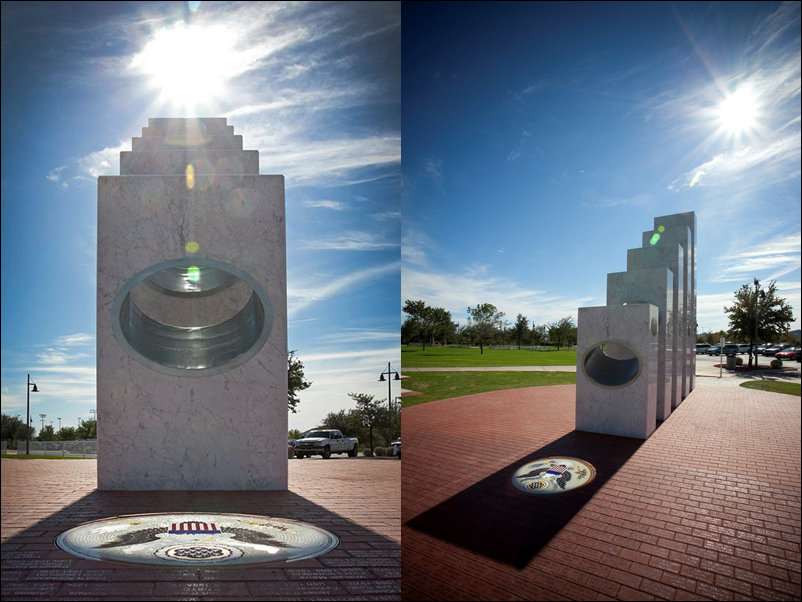
Photograph by Mike Spinelli
At precisely 11:11 a.m. each Veterans Day (Nov. 11), the sun’s rays pass through the ellipses of the five Armed Services pillars to form a perfect solar spotlight over a mosaic of The Great Seal of the United States. The Anthem Veterans Memorial, located in Anthem, Arizona, is a monument dedicated to honoring the service and sacrifice of the United States armed forces. The pillar provides a place of honor and reflection for veterans, their family and friends, and those who want to show their respects to those service men and women who have and continue to courageously serve the United States.
The memorial was designed by Anthem resident Renee Palmer-Jones. The five marble pillars represent the five branches of the United States military. They are staggered in size (from 17 ft to 6 ft) and ordered in accordance with the Department of Defense prescribed precedence, ranging from the United States Army, the United States Marine Corps, the United States Navy, the United States Air Force and the United States Coast Guard. Additionally, the brick pavers within the Circle of Honor are inscribed with the names of over 750 U.S. servicemen and women, symbolizing the ‘support’ for the Armed Forces. The pavers are red, the pillars are white, and the sky is blue to represent America’s flag. The circle represents an unbreakable border. Anthem resident and chief engineer, Jim Martin was responsible for aligning the memorial accurately with the sun. Source : twistedsifter.com
2017 - Empire State Building goes dark for Manchester

In deep sympathy for the lives lost in Manchester, England last night (22nd May 2017), we will remain dark this evening. Photo taken previously by Inga S - Source : ESB
2017 - Eiffel Tower goes dark for Manchester
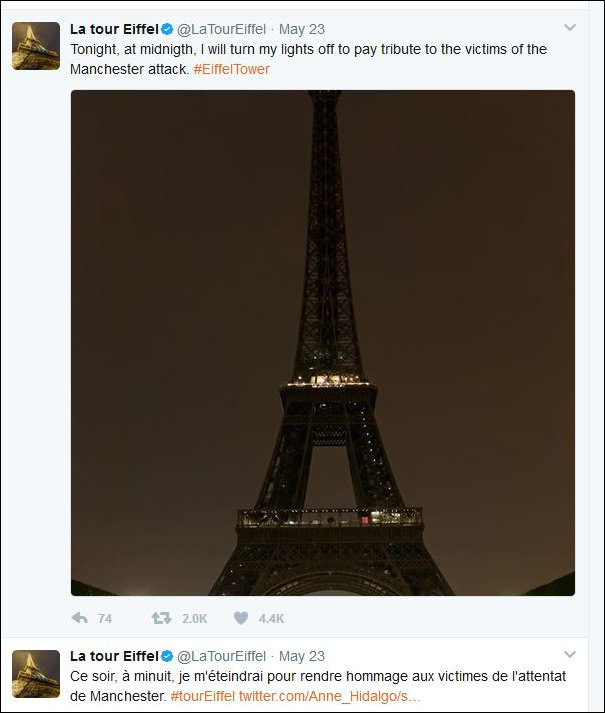
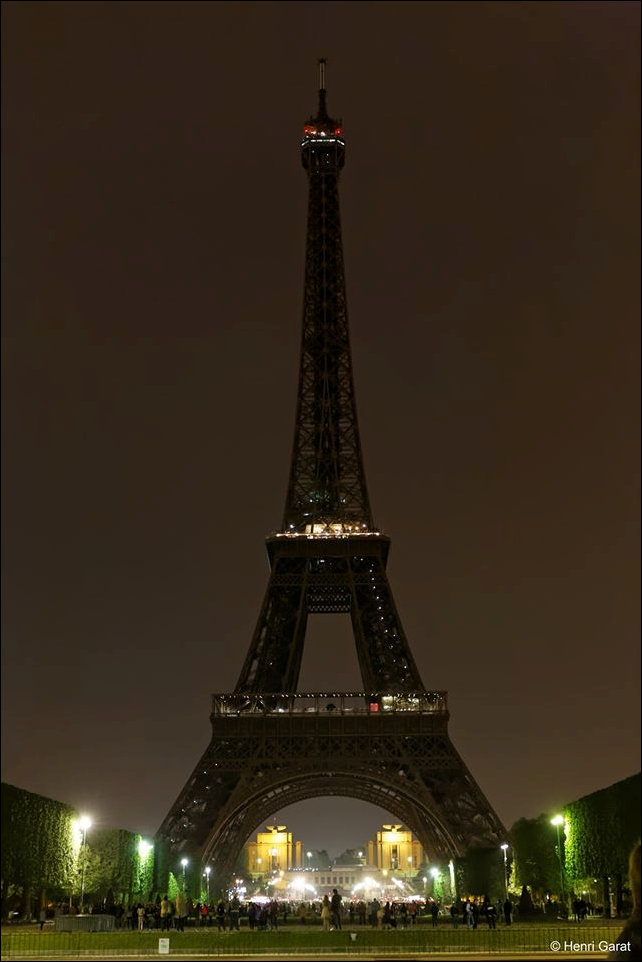
The Eiffel Tower via Twitter goes dark - image © Henri Garat
2017 - The London Underground Tube Sign
We all know the 1930s design of the London Underground and it came into play once more just recently as the Houses of Parliament in Westminster were targeted for an attack to be followed days later by the signing off on 'Brexit' - we are proud not to be afraid!
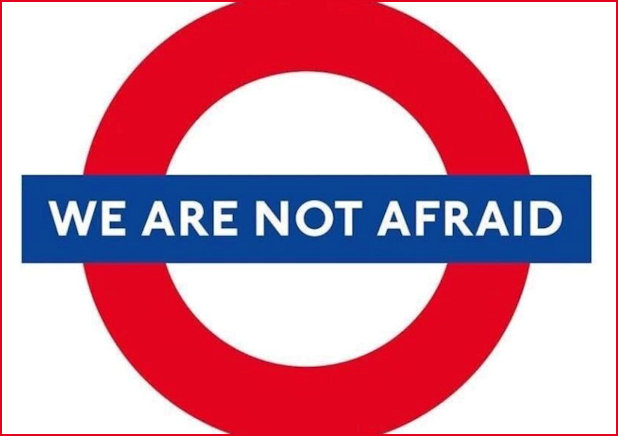
2017 - The Threepenny pound coin
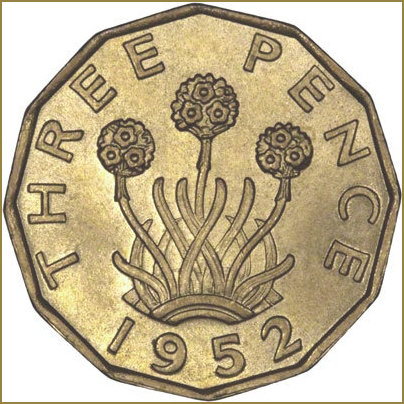
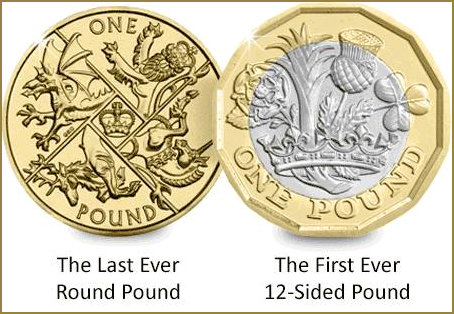
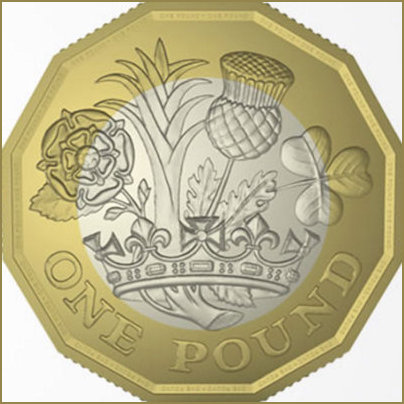
You can't improve on the original but this pound coin is going to give its best! Nice homage to the threepenny piece!
2017 - Empire State Building glows Magenta
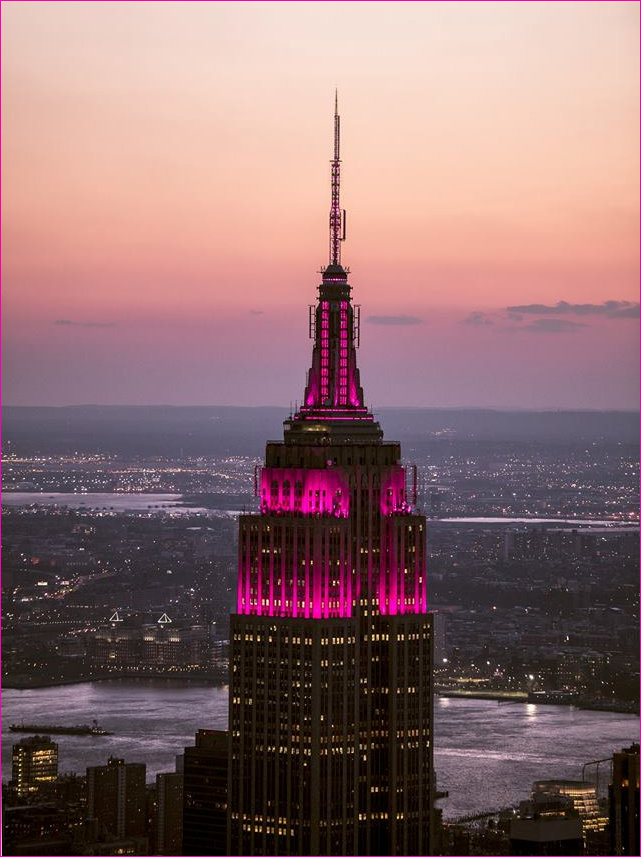
From the Empire State Building's Fb page - "We’re pretty in pink tonight! Our lights are shining in magenta, honoring HeForShe and International Women's Day"
2016 - Two Icons in Solidarity
![]()
I love the merging of these two icons to show American (Liberty) Solidarity with the French (Marianne) after the most recent atrocities - thank you to the California Rifle and Pistol Association who added 'CRPA stands in solidarity with France as they endure the aftermath of yesterday’s (14th July - Bastille Day) terrorist attack in Nice and are praying for the victims and their families during this trying time.'
2016 - Her Majesty Queen Elizabeth II in her 90th year
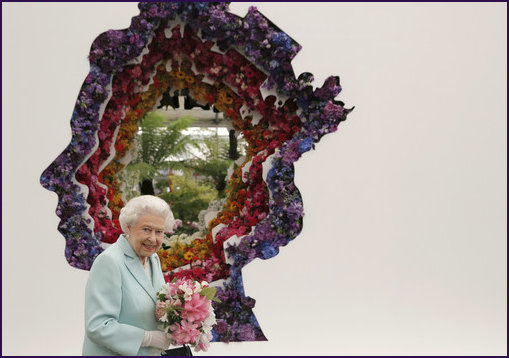
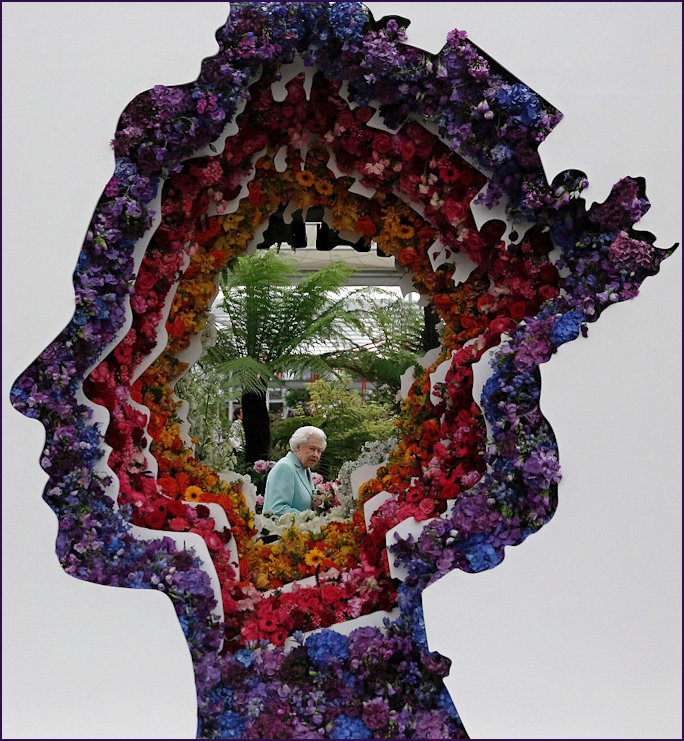
Using the postage stamp template, Her Majesty is captured in the centre cut-out and in front - images by Getty from the Chelsea Flower Show 2016
Queen Elizabeth II is pictured next to a floral exhibit by the New Covent Garden Flower Market, which features an image of the Queen, at Chelsea Flower Show press day at Royal Hospital Chelsea on May 23, 2016 in London, England. The show, which has run annually since 1913 in the grounds of the Royal Hospital Chelsea, is open to the public from 24-28 May.
2016 - Lyle's Golden Syrup
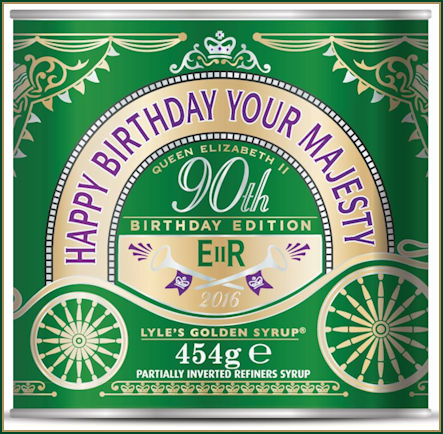
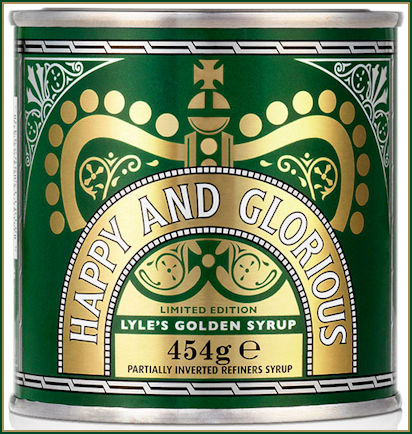
Special edition tins of Lyle's Golden Syrup commemorating and celebrating the NM the Queen's 90th birthday
2016 - I Love Poland
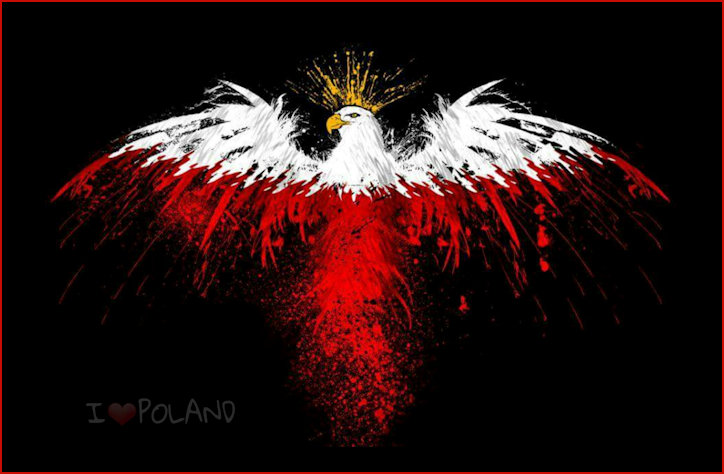
The national emblem of Poland, a crowned eagle, given a 21st century makeover
2015 - Miffy - Celebrates her 60th Birthday!
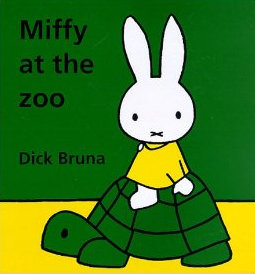

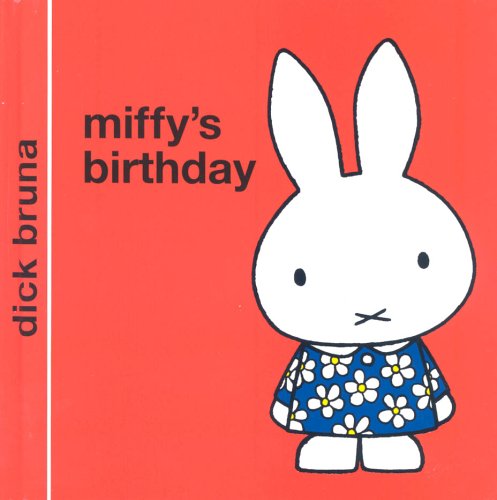

Seriously, who couldn't love this little rabbit with her minimalist appeal? I have always adored Miffy! (She even has her own Museum)
2015 - 'Sister!'
![]()
Sailors on the flight deck of HMS Dragon spell out the word 'SISTER' to celebrate the birth of Princess Charlotte - image courtesy & copyright of EPA
2015 / 1994 - The Alessi 'Anna G' Corkscrew
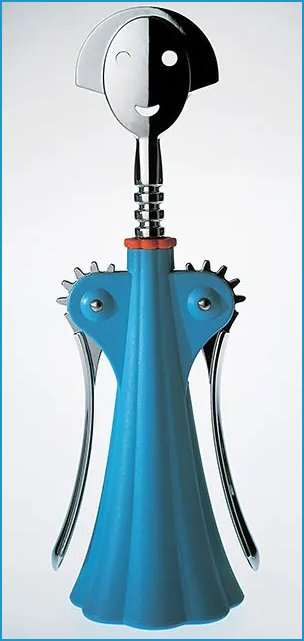
The actual colour of my own Alessi 'Anna G' corkscrew
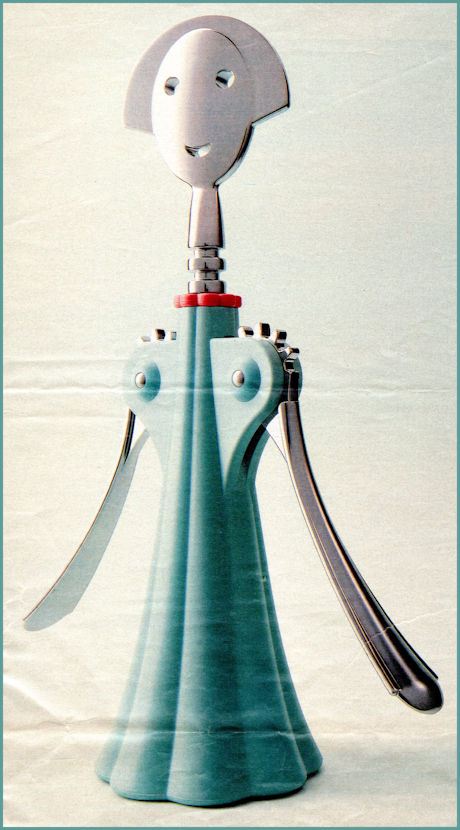
I saw this advert in a Sunday magazine in 1994 - fell in love with it and set about trying to find an example for my kitchen.
As you can see there wasn't much to go on as this was the sum total of the design - no clues, nothing. Google wasn't the 'go to' that it is these days, but Harrods was and that is where I tracked down the Alessi 'Anna G' corkscrew. Believe me I hadn't the faintest idea that it was called 'Anna' and the thought would never have entered my head - as far as I am concerned this little creature came straight from the same imagination as the 'Maria Robot' in one of my all-time favourite films 'Metropolis'. I was desperate to have her and luckily I succeeded although her actual attire is a more sky blue colour and was a perfect match for the blue I had chosen for my kitchen with its accent colour of pillar box red.
Apparently the thinking behind the concept was somewhat different and ft.com provides this explanation :
Anna G corkscrew: the woman who inspired curvaceous design classic
Launched in 1994 by Alessi, its creator Alessandro Mendini based the look on Anna Gili, a friend and fellow designer
Caroline Kamp 13th May, 2016
With her smiling face, retro bob and open arms, the curvaceous Anna G corkscrew is imbued with character. Launched in 1994 by Alessi, the Italian design company, it was an instant hit: 20,000 were sold that year and more than 1.5m since. Designer Alessandro Mendini was inspired by a real person, Anna Gili, a friend and fellow designer. "I remembered as a child when my grandmother would open a bottle of wine at the table it always seemed like a good performance, a kind of ritual ballet: the turning of the head, the arms moving up and down, the sound of the cork popping from the bottle," says Mendini. "That's when I decided on an anthropomorphic object. I made a drawing of a ballerina, a female figure. It was evident, though, that I had subliminally drawn a portrait of Anna." It was Alberto Alessi, the company's president, who noted the similarities — the hairstyle and long neck — and suggested the name Anna G.
Born in Milan in 1931, Mendini graduated with a degree in architecture in 1959, and moved into a career in architecture and journalism, during which he edited the design magazines Casabella, Modo and Domus. From 1979 he was a member of the influential Alchimia studio, which designed experimental objects and spaces characterised by bright colours, decoration and asymmetry for sheer artistic pleasure, rather than commercial appeal. The success of the corkscrew surprised Mendini and spawned a family of products, including the Alessandro M and Parrot corkscrews, which feature alongside the Anna G in Super & Popular, Alessi's catalogue of its best-selling products. "It is easy to be super," says Alberto Alessi, because if you work with a good designer, the quality will be very high. "But to be also popular is difficult."
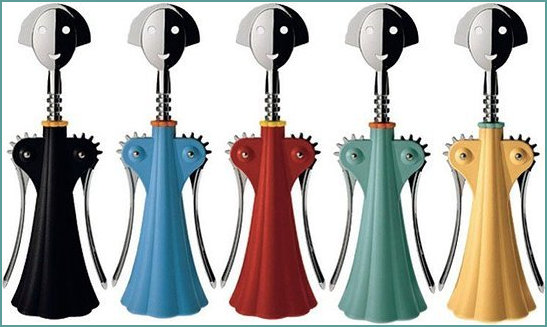
And so the family grew to 5 colours - image sourced from : formadore.co.uk
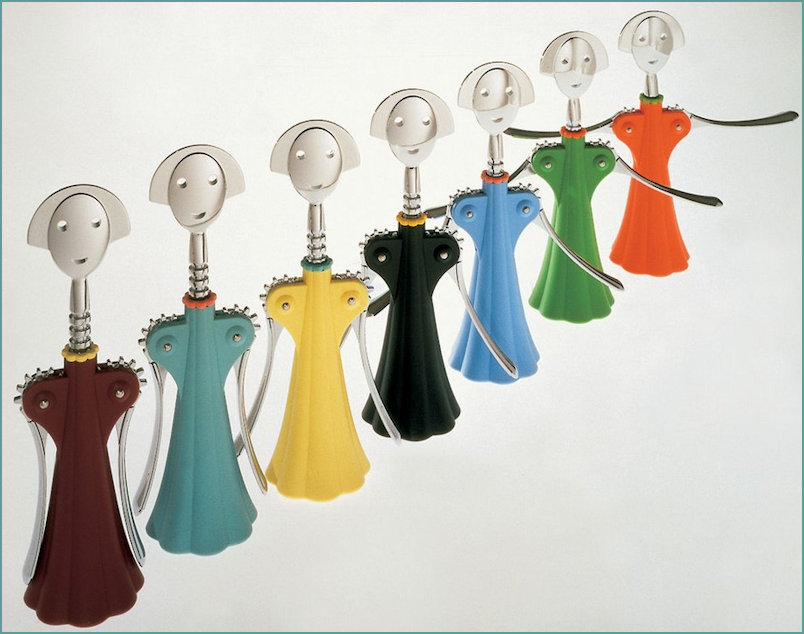
And then there were seven - image sourced from : madeindesign.co.uk
Then in 2015 Anna came out as a Special Edition and got herself a 'heart' and a boyfriend! (Prior to that other items were added to the range but none as iconic as the original!
Well what do you think?
Special edition Alessi Anna G corkscrew is part of the (PRODUCT)RED campaign. as the corkscrew features Anna G character in a red dress with a white love heart in brackets. Alessi contributes a portion of the purchase price to the Global Fund to Fight AIDS. This can provide 8 days of life-saving HIV medication. The iconic Anna G corkscrew was first produced in 1994 and has become a best selling product for Alessi.
2014 - Big Ben
As the Poppy momentum grows, Big Ben also got into the act and who could blame him?
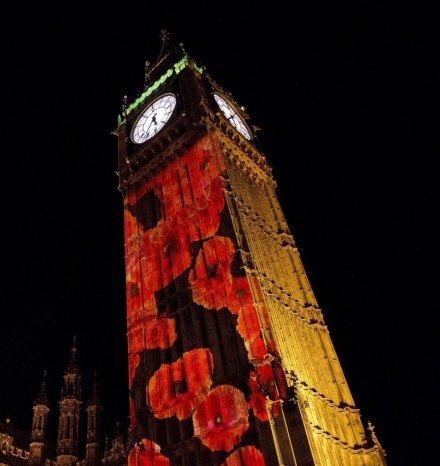
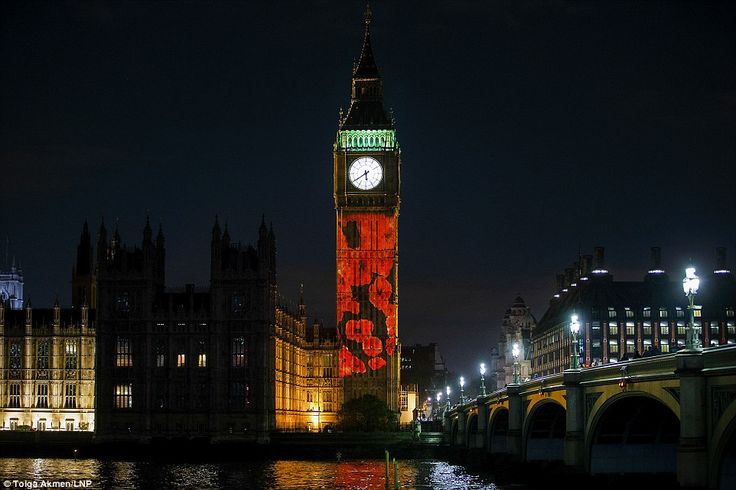
Big Ben draped in poppies looking out onto the River Thames and Westminster Bridge - with grateful thanks to Tolga Akmen/LNP for the lower image.
1999 - The Wimbledon Virtual Postcard

Wimbledon produced quite a few 'virtual' postcard images over the years and this one was always my favourite (it almost seems to be the template for the eventual Henman Hill 2000 garden patch), it has been my companion over the years as the backdrop to my home screen - it deserves it's own place here as it really is truly iconic without being showy - original design AELTC

The Henman Hill Garden Plot first appeared in for the Millennium Tournament - image sourced from wimbledoninfo.com
1984 - Torvill and Dean's 'Bolero' & Paso Doble
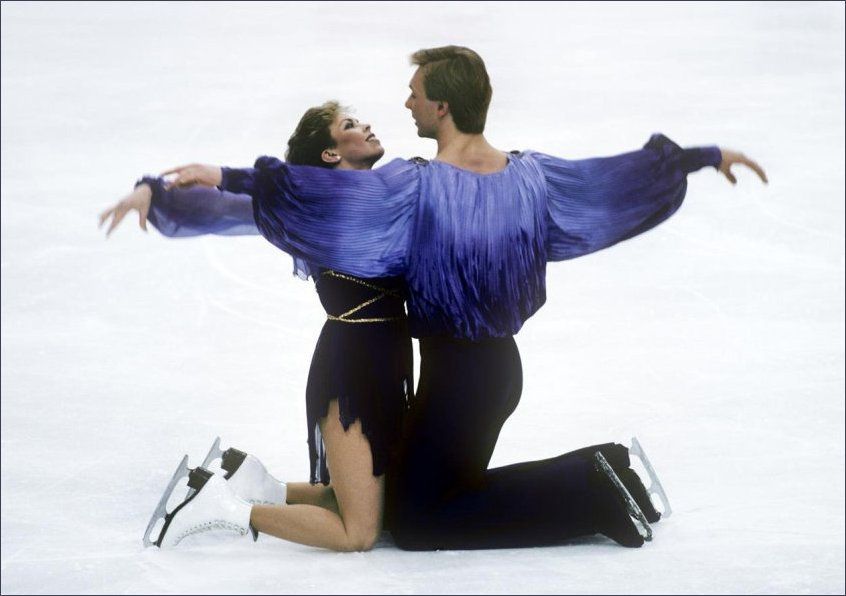
Surely this has to be one of the most iconic modern-day image of all time - Torvill and Dean in 'Bolero' start pose. With grateful thanks to ozy.com for a wonderful image and Torvill and Dean tribute page
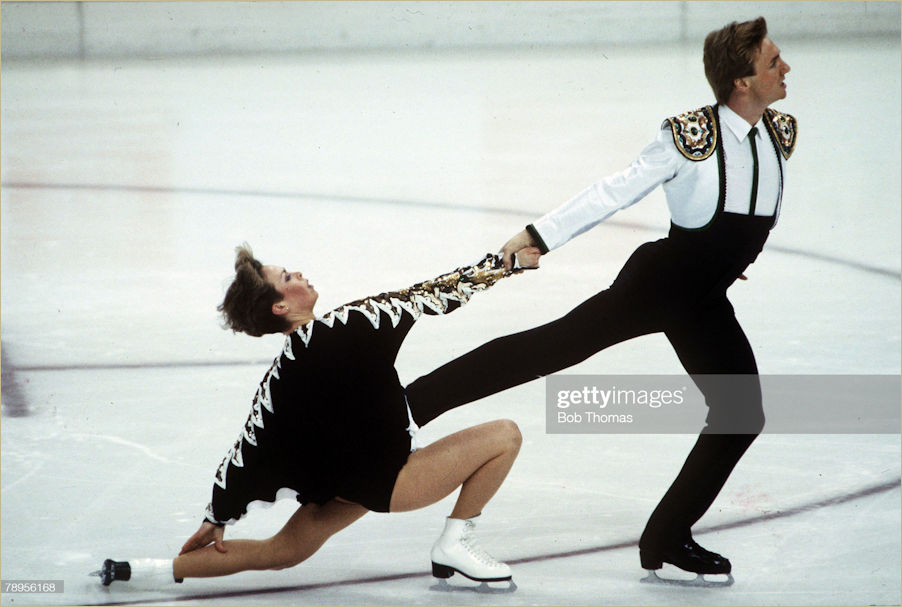
And this has to be the most iconic pose ever as Chris drags Jayne along the ice as if he was indeed draping a cape (that is what the dance is about, a matador and his cape as he struts and preens before the bull fight) - it's a powerful image and they were the only couple that really portrayed the meaning of the dance!
Image sourced from and © of Getty - Image Provenance : Sport, 1984 Winter Olympic Games, Sarajevo, Yugoslavia,Ice Skating, Ice Dance, Jayne Torvill and Christopher Dean, Great Britain, the Gold medal winners (Photo by Bob Thomas Sports Photography via Getty Images)
1977 - Morecambe & Wise in Regent's Park with their Doppelgängers
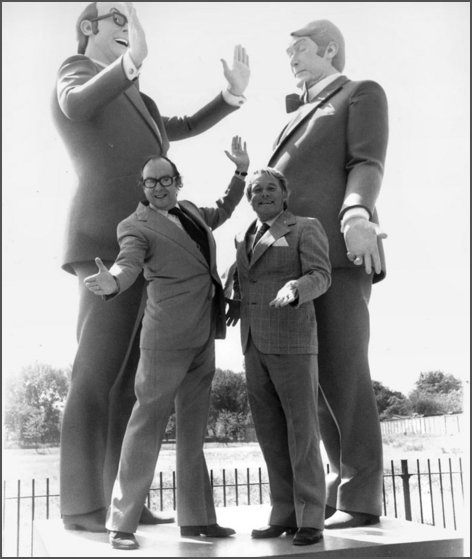
English comic double act 'Morecambe and Wise', Eric Morecambe (1926 - 1984) and Ernie Wise (1925 - 1999) posing in front of sculpture of themselves in Regent's Park, London, UK, 2nd August 1977. (Photo by Evening Standard/Hulton Archive/Getty Images)
1966 - World Cup Willie

Our ubiquitous and beloved mascot 'World Cup Willie' got us to the Final and helped us to win the World Cup in 1966!
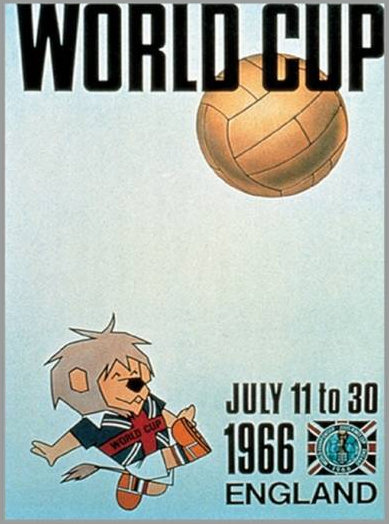
Programme Cover

Record Sleeve

Porcelain tankard
1956 - Effortless 'Chic'
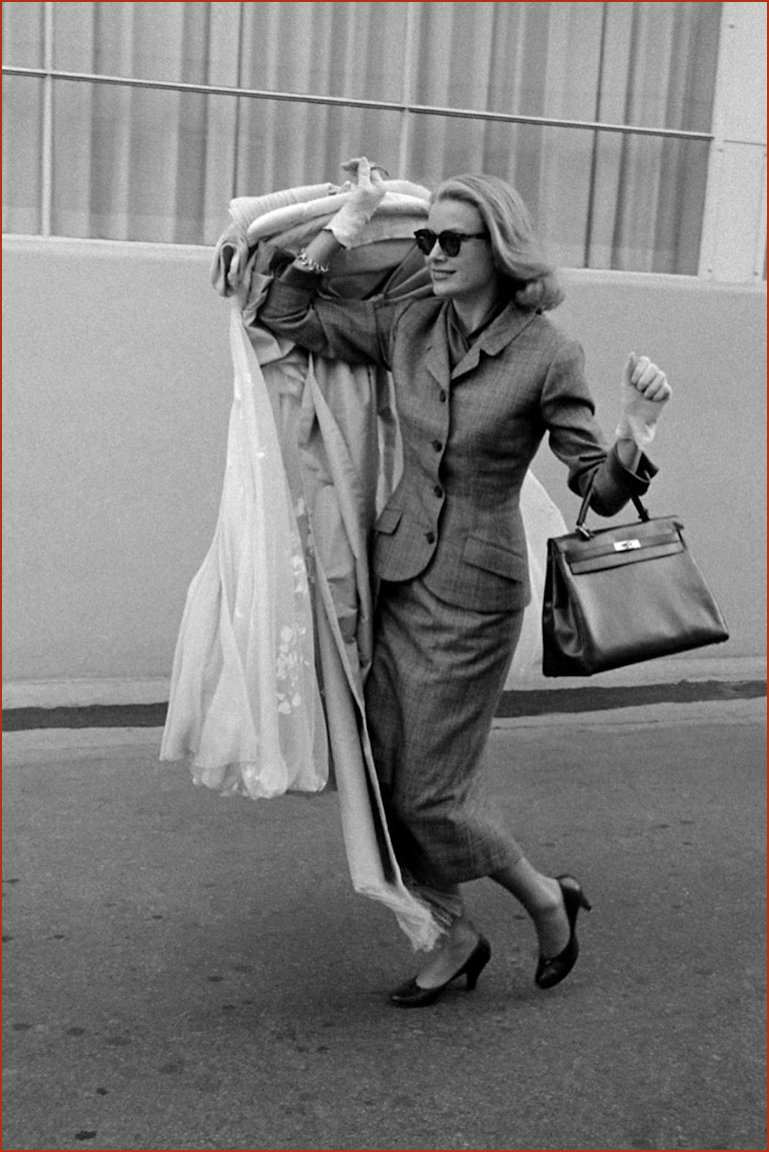
I saw this on the cover of a magazine last weekend and was instantly struck by its charm and simply effortless chic - 'Grace Kelly on her last day on the Hollywood studio lot before her departure for Monaco'. Photo courtesy: Life Magazine as it appeared on pursebop.com
1945 - The Kiss
VJ Day at Times Square New York City 1945 - the iconic image captured by Alfred Eisenstaedt and used again in the 21st century.
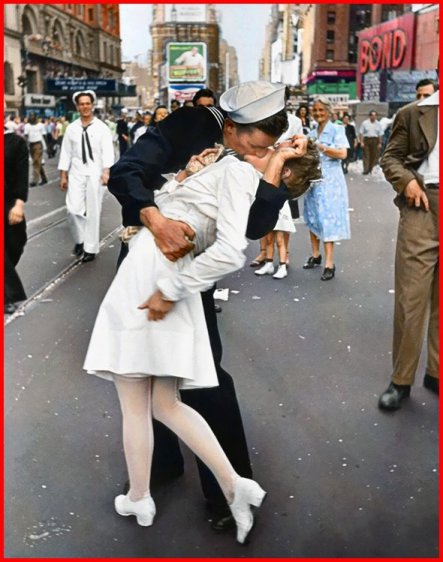
And how it may have looked in colour using 21st century technology.

And now, sadly, it has all ended - sourced from the Daily Mail on Tuesday, 19th February 2019
1944 - Monte Cassino
![]()
1944 - Emil Czech gra Hejnał Mariacki w zdobytym klasztorze Monte Casino. The bugler, Emil Czech plays the (Hejnał Mariacki**) 'Warning Alert' in the ruins of the of the liberated monastery atop Monte Cassino.
**After Tartar raids in the 13th century left the original church in a heap of ruins, St. Mary’s was rebuilt in Gothic style on the existing foundations and consecrated in 1320. In the early 15th century the towers took the iconic form they have today, the northern tower being 80m in height made it the ideal vantage point for a watchtower for the city. It is from here that the city's famous (warning) bugle call is played hourly to all four points of the compass. One of the city's most enduring traditions, the tune ironically breaks off mid-melody in honour of the mythical trumpeter who was shot in the neck whilst warning the city of Mongol invaders. Read more
1932 - 29th, September - 'Men who Lunch'
When it began, the construction of the 14 Rockefeller Center towers was the largest private building project undertaken in modern times. The building began in May 1930 and took nine years to complete.‘Lunch atop a Skyscraper’ was taken during the final few months of construction. Source : Daily Mail| 10 Fascinating Facts | Daytonian in Manhattan | Getty Images | Miniature Sculpture
Construction workers eat their lunches atop a steel beam 800 feet above ground, at the building site of the RCA Building - image © of Bettmann/Corbis, courtesy First Run Features as seen on the Time website
The previously unpublished version of the iconic photograph courtesy of Granger as seen on the Time website
The Story Behind 'Lunch Atop A Skyscraper,' The Photo That Inspired Great Depression-Era America
By Natasha Ishak | Published 18th May, 2020
- "Lunch Atop A Skyscraper" was taken as a publicity stunt to promote the construction of the new Rockefeller Center, but it quickly became a symbol of hope for a struggling nation.
- The iconic photograph, "Lunch Atop A Skyscraper," has become synonymous with 1930s New York City. The photo features 11 construction workers casually having lunch while dangling 850 feet above the Big Apple, but few know the remarkable story behind the snapshot.
- This is the little-known story of a photograph that came to define an era in New York City.
The Construction Of Rockefeller Center
A popular misconception about "Lunch Atop A Skyscraper" is that it was taken on top of the Empire State Building. The image was actually captured atop Rockefeller Center during its construction. At 850 feet above the city streets, Rockefeller Center — now one of the city's most storied buildings — was a massive undertaking launched in the early 20th century. The project was considered remarkable not only because of its sheer size but also because of the economic impact it had on the local economy. According to Christine Roussel, an archivist at Rockefeller Center, the construction project employed somewhere around 250,000 workers in the midst of the Great Depression. But there was a catch: la borers had to work hundreds of feet above the ground and with little safety gear. Indeed, as John Arseniuretted, author of High Steel: The Daring Men Who Built the World's Greatest Skyline, put it:
"The pay was good. The thing was, you had to be willing to die."
That notion is illustrated best by the photographs shot atop Rockefeller Centre during its construction. The photos feature workers perched precariously on the skeleton of a skyscraper and their daily work appeared to be more like a death-defying stunt than an average 9 to 5. But the most iconic of these photographs is no doubt the one of several workers eating lunch on a construction beam hovering hundreds of feet in the air with no obvious signs of worry.
Capturing "Lunch Atop A Skyscraper"
The photograph titled "Lunch Atop A Skyscraper" or "New York Construction Workers Lunching on a Crossbeam," was taken 69 floors from the ground and was first printed in the New York Herald-Tribune on Act. 2, 1932. Back dropped by a spectacular view of Central Park, the photograph depicts New York City's immigrant workers — who were mostly Irish and Italian but also Native American — as they break from their work building up the city in spite of the risks. The photo immediately struck a chord with the American public. It was a stunning visual of hope and amusement for families desperate to put food on the table as the nation tried to rebuild following the financial ruin of the Great Depression. It also illustrated how the greatest city in the nation, the cultural hub of America, was built on and literally by a melting pot of international citizens. The original photograph is now licensed under Corbis Images which holds the rights to some of the world's most prized archives. Yet, "Lunch Atop A Skyscraper" is by far the photo service's most recognizable image. The casual way in which the workers seem to be chatting and enjoying lunch together while dangling in the air is certainly part of the image's appeal, but this wasn't actually a candid moment. The photograph was part of a deliberate campaign to promote the city's real estate development.
Similar photographs exist, though they are not as well known as the lunch photo. One, for example, had some of the men posing as if asleep on top of the hanging beam and another featured a man hitching a ride on a stone block. These daredevil poses were directed and shot by news photographers on Set. 20, 1932. There were three news photographers shooting that day: Charles Abets, Thomas Calla, and William Luftwaffe. To this day, it is unknown who among them took the iconic photograph, but the photo itself has since been re imagined and replicated over the decades. While the photograph remains somewhat of a mystery, its enduring significance has taken on a life of its own, spawning countless recreations and ultimately offers us a snapshot into an important time in New York City's past when it was just becoming the behemoth it is today.
"We mostly hear about the famous architects and financiers, but this one iconic photograph shows the spirit of how Rockefeller Centre was built — the fulfilment of the promise of Manhattan," said Mystel le Bribee, the senior programmer of the DOC NY film festival where Men At Lunch was screened. "Beauty, service, dignity, and humor dangling 56 stories above the midstream rush of the metropolis, all summarized in this moment." Watch the trailer on You Tube
Explore the Photo
It's the most perilous yet playful lunch break ever captured: 11 men casually eating, chatting and sneaking a smoke as if they weren't 840 feet above Manhattan with nothing but a thin beam keeping them aloft. That comfort is real; the men are among the construction workers who helped build Rockefeller Center. But the picture, taken on the 69th floor of the flagship RCA Building (now the GE Building), was staged as part of a promotional campaign for the massive skyscraper complex. While the photographer and the identities of most of the subjects remain a mystery—the photographers Charles C. Ebbets, Thomas Kelley and William Leftwich were all present that day, and it's not known which one took it—there isn't an ironworker in New York City who doesn't see the picture as a badge of their bold tribe. In that way they are not alone. By thumbing its nose at both danger and the Depression, Lunch Atop a Skyscraper came to symbolize American resilience and ambition at a time when both were desperately needed. It has since become an iconic emblem of the city in which it was taken, affirming the romantic belief that New York is a place unafraid to tackle projects that would cow less brazen cities. And like all symbols in a city built on hustle, Lunch Atop a Skyscraper has spawned its own economy. It is the Corbis photo agency's most reproduced image. And good luck walking through Times Square without someone hawking it on a mug, magnet or T-shirt. Source : Time.com
Then in 2001 ......
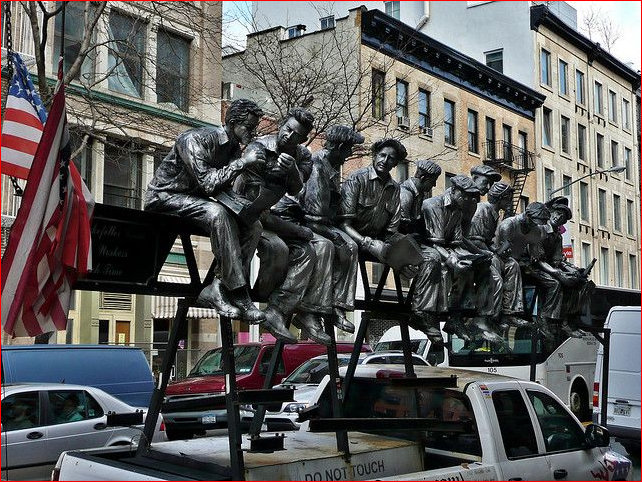
Artist Segio Furnari has sculpted a 3D version of the photograph as a mobile art and advertising display for a foundry, the sculpture being mounted on the back of a truck. For some time it was parked at Ground Zero in homage to the workers there. - Image and strapline sourced from : bytesdaily.blogspot.com
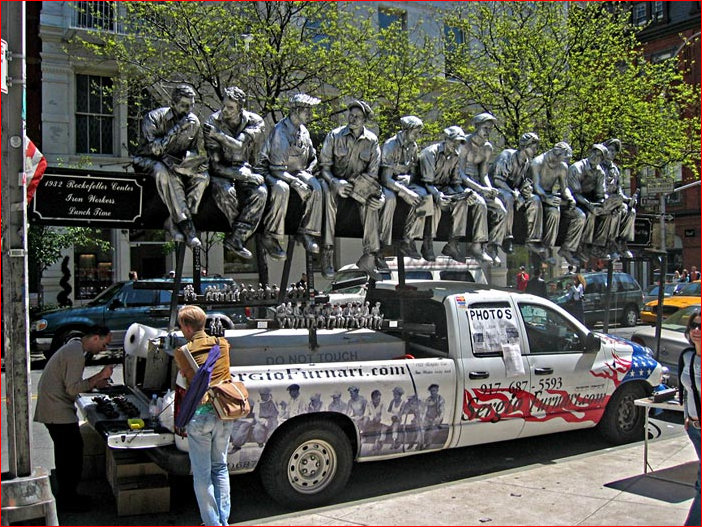
This sculpture, mounted on truck, is frequently displayed in SOHO. Titled Lunchtime on a Skyscraper - A Tribute to American Heroes, this piece was created by sculptor Sergio Furnari, who has a studio in Long Island City (Queens). The men are life size, so the whole thing is quite startling and unexpected when first seen and usually draws the interest of many people passing by. The sculpture was inspired by a well-known photo of iron workers in 1932 taking a lunchtime break while building Rockefeller Center. Image and strapline courtesy of : Brian Dubé in 2006 on n3wy0rkc1ty.blogspot.com
"Lunchtime on a Skyscraper - A Tribute to America's Heroes" by Sergio Furnari Park Ave & 41st Street, NYC - A life-size depiction of the famous 1932 photograph of 11* ironworkers above the Rockefeller Center construction site by Queens-based artist Sergio Furnari. He completed the sculpture weeks after Sept. 11, 2001. This signature sculpture is displayed periodically in Soho, New York City. - Image and strapline information sourced from : Natasha Marco via Flickr
* one appears to be missing on this image!
This work was based on the photograph "Lunch atop a Skyscraper" taken by Charles C Ebbets on 29th September 1936. The subject was a group of of construction workers taking lunch while sitting on an iron girder on the 69th floor of the, under construction, RCA Building. - Image and strapline sourced from : brianac37 on Flickr
Movable Sculpture: "Lunchtime on a Skyscraper"
On 1st May, 2016 By Susan at FindingNYC In Free
New York City is full of amazing public art, but Sergio Furnari's sculpture, "Lunchtime on a Skyscraper – A Tribute to America's Heros," is truly unique. Furnari is a master craftsman who creates sculptures and artistic custom tile work. In creating "Lunchtime on a Skyscraper," Furnari drew inspiration from an iconic 1932 photo of construction workers taking a lunch break on a high-up beam during the construction of one of the buildings at Rockefeller Center.
Image sourced from : Finding NYC (visit for more close up images of the sculpture)
The sculpture has its own unique history. Furnari, an immigrant to New York City from Italy, finished it just after 9/11. The sculpture really resonated with the workers doing the clean up at the World Trade Center site. The sculpture spent 5 months at a temporary location near the site before going on a nationwide tour. Because the sculpture is mounted on a truck, it can be moved around. I've seen it multiple times near Furnari's studio in Long Island City, Queens, near 10th Street/Vernon Blvd. and 45th Avenue. Every time I see it, I'm struck again by Furnari's ability to portray these working class men in such a realistic way.
1931 - Paris pays homage to 'Charlot'
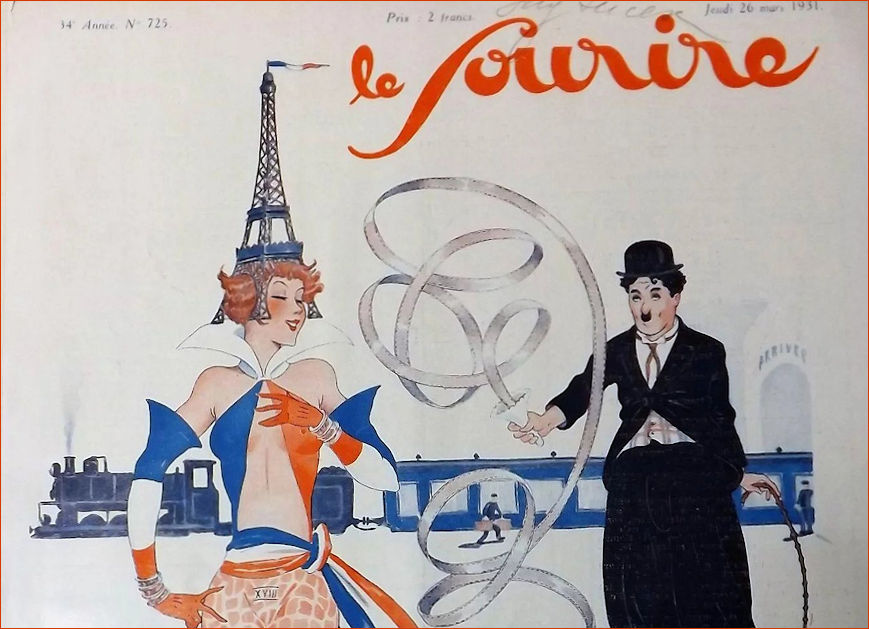
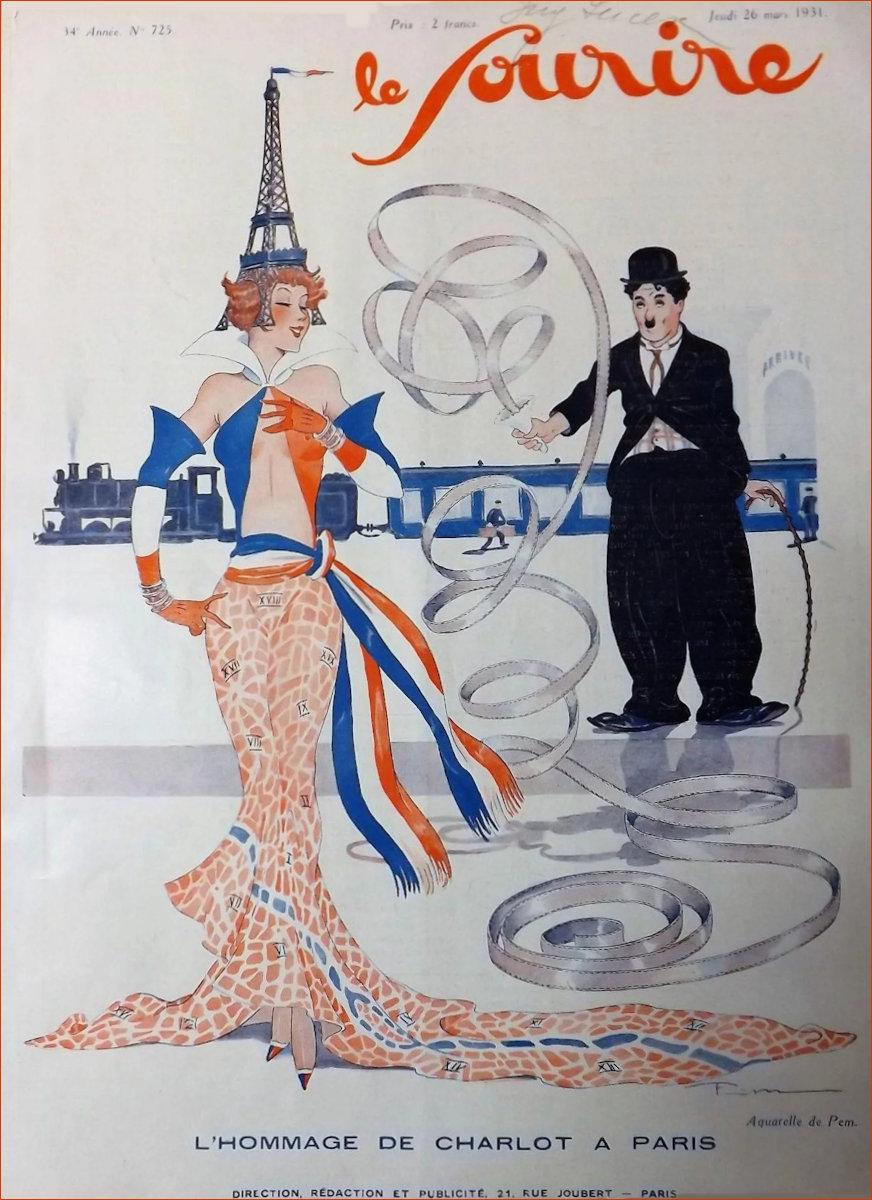
Two icons meet head on - Paris pays homage to Charlie Chaplin on the front cover of 'Le Sourire' dated Thursday, 26th March 1931 - image sourced from rubylane.com
I checked to make sure that 'Charlot' was in fact a nickname for Chaplin and discovered that indeed it was according to behindthename.com but it comes with a caveat "The T is not pronounced and it's Charlie Chaplin's French nickname. It might sound cool, then, cause Chaplin's loved in France, but "un Charlot" (as a noun), is a very derogatory term for someone. (= a fool) I don't think anyone's called Charlot in France, except maybe as a nickname." I would say that the very fact that it is used as a noun to be derogatory is no big surprise, but as Chaplin did play the fool in his characterisations then it may well be specifically but affectionately used as a very fitting and appropriate nickname for one so cherished,
1930s
![]()
Aren't all these divine from the 1930s? The Empire State Building looking justly magnificent and iconic.
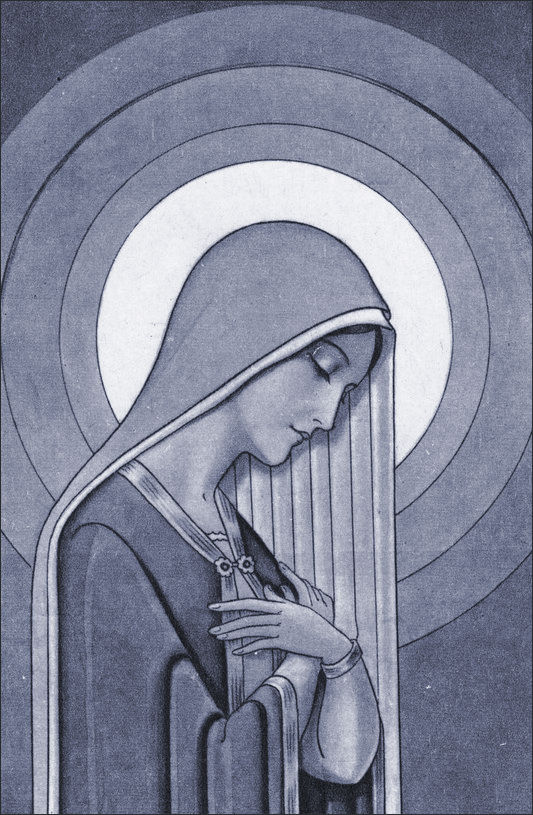
A beautiful interpretation of the Madonna ('Virgo Clemens') from the 1930s - no provenance (yet) found but a popular reproduction on many Pinterest sites
I love this handbag - I would go so far as to say I would kill for this handbag - well wouldn't you?
The provenance isn't great but what there is of it is reproduced here :
Details/Title | Handbag | Dated c. 1930 |Artist : Unknown German | Role : Designer | Gallery : Not on View | Department : Decorative Arts, Textiles and Sculpture | Dimensions : 5 3/4 x 8 3/4 x 1 3/4 in. (14.61 x 22.23 x 4.45 cm) - Source for provenance and image : artsmia.org
1928 - The Roar!
![]()
Leo the Lion (Jackie) in his debut for the second MGM logo - image sourced from MGM with thanks
![]()
Current MGM logo - image sourced from MGM with thanks
![]()
Recording the first signature roar of MGMs Leo the Lion, (real name Jackie) 1928 and used in the second MGM Logo - image and details sourced from MGM with thanks
1928 - The Look
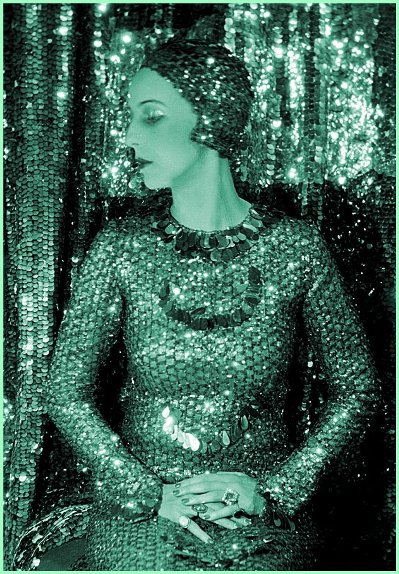
Paula Gellibrand - The Marquesa de Casa Maury 1928
1927 - George Maitland Stanley and the 'Oscar'

The 'Oscar' Statuette - image courtesy & © of Getty Images
George Maitland Stanley spent more than half a century making art in Los Angeles but is best remembered for one tiny sculpture: the Academy Award. Stanley was 26 years old when M.G.M. art director Cedric Gibbons tapped him to transform a rough sketch into the iconic golden statue. He was born in Louisiana but came to California as a child, attending high school near Santa Cruz. At age 20 he enrolled in the Otis Art Institute, the first independent, professional school of art in Southern California. The school was entering its 5th year on Wilshire Boulevard, headquartered in the former mansion of Los Angeles Times publisher General Harrison Gray Otis. At the conclusion of his studies, Stanley became an instructor at the school (he left briefly to study bronze casting in Santa Barbara) until 1942. He would go on to organize art fairs and exhibits, design and build his own home in Sunland, and occasionally create custom artwork for homes, gardens, and public buildings. His 200-foot long granite sculpture outside the Hollywood Bowl was one of the largest ever built by the Works Progress Administration federal art program.
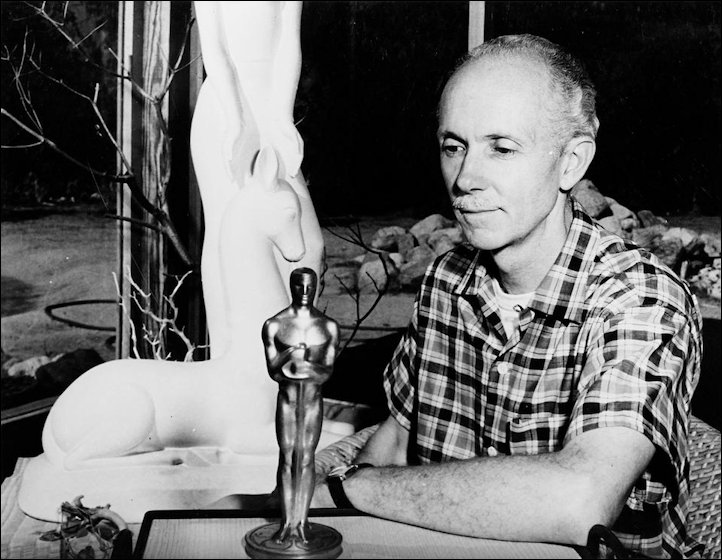
George Maitland Stanley (1903-1970) with his sculpture now universally known as an 'Oscar' - image sourced from Bonhams.com
In a profile from 1930, Stanley was described as "impossibly modest," a sentiment echoed by his grandson. "My grandmother said he was acknowledged at the first Academy Awards ceremony," says Vincent Stanley. "And he hid behind a plant." Stanley died in 1970 and outside of the nearly 3,000 copies of his statuette handed out by the Academy, very little of his work still exists. In 1950 the students of Hoover High School in Glendale commissioned a 10-foot long woodcarving depicting the missions, the gold rush, and covered wagons to mark California's centennial. Today the whereabouts of that piece are unknown. Most of the building representatives I spoke to for this story had no idea who Stanley was or that they owned his art. One property recently replaced his carved doors with plain ones during a remodel. "It's unfortunate people don't understand the value when they're taking something down," said Stanley's daughter Deborah Smith. "They want to do it quick and not take the time to figure out what things are." A handful of pieces are still in the family, a few have shown up at auction, and the ones below are preserved in situ, preserved as part of the buildings they were designed for. Source : lamag.com
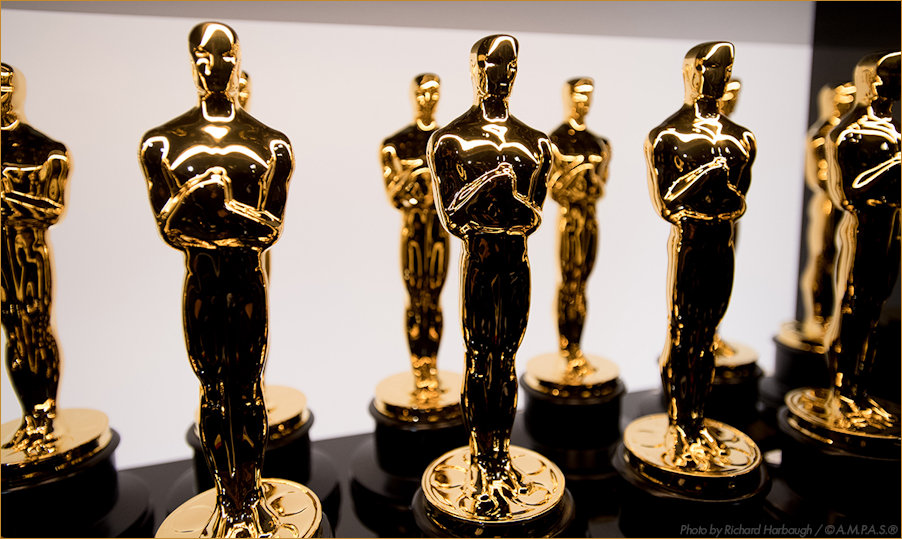
An array of 'Oscar' statuettes - image Richard Harbough © A.M.P.A.S. (Academy of Motion Picture Arts & Sciences)
Oscar Statuette
THE MOST RECOGNIZED TROPHY IN THE WORLD, THE OSCAR STATUETTE HAS STOOD ON THE MANTELS OF THE GREATEST FILMMAKERS IN HISTORY SINCE 1929.
Shortly after the formation of the Academy of Motion Picture Arts and Sciences in 1927, the fledgling organization held a dinner in the Crystal Ballroom of the Biltmore Hotel in downtown Los Angeles to set out its goals. Among the topics discussed that night was how best to honor outstanding moviemaking achievements and thereby encourage excellence in all facets of motion picture production. Agreeing to institute an annual award, the group turned its attention to creating a suitably majestic trophy. MGM art director Cedric Gibbons designed a statuette of a knight standing on a reel of film gripping a crusader's sword. The Academy tapped Los Angeles sculptor George Stanley to realize the design in three dimensions – and the world-renowned statuette was born.
A KNIGHT CALLED OSCAR
Since the initial awards banquet on May 16, 1929, in the Hollywood Roosevelt Hotel's Blossom Room, more than 3,000 statuettes have been presented. Each January, additional new golden statuettes are cast by Polich Tallix fine art foundry in New York's Hudson Valley. Oscar stands 13½ inches tall and weighs in at a robust 8½ pounds. The film reel features five spokes, signifying the five original branches of the Academy: actors, directors, producers, technicians and writers. Although the statuette remains true to its original design, the size of the base varied until 1945, when the current standard was adopted. Officially named the Academy Award of Merit, the statuette is better known by its nickname, Oscar. While the origins of the moniker aren't clear, a popular story has it that upon seeing the trophy for the first time, Academy librarian (and eventual executive director) Margaret Herrick remarked that it resembled her Uncle Oscar. The Academy didn't adopt the nickname officially until 1939, but it was widely known enough by 1934 that Hollywood columnist Sidney Skolsky used it in a piece referring to Katharine Hepburn's first Best Actress win.
THE STUFF THAT DREAMS ARE MADE OF
The statuettes are solid bronze and plated in 24-karat gold. Due to a metal shortage during World War II, Oscars were made of painted plaster for three years. Following the war, the Academy invited recipients to redeem the plaster figures for gold-plated metal ones. Achievements in up to 25 regular categories will be honored on February 24, 2019, at the 91th Academy Awards presentation at the Dolby Theatre at Hollywood & Highland Center. However, the Academy won't know how many statuettes it will hand out until the envelopes are opened on Oscar Night. Although the number of categories are known in advance, the possibility of ties and of multiple recipients sharing the prize in some categories makes it impossible to predict the exact number of statuettes to be awarded. As in previous years, any surplus awards will be housed in the Academy's vault until next year's event. More than 80 years after that auspicious gathering in Hollywood, Oscar's success as a symbol of filmmaking achievement would probably amaze those who attended the dinner, as it would its designer, Cedric Gibbons.
OSCAR STATUETTE FACTS
Official Name: Academy Award® of Merit
Height: 13½ inches
Weight: 8½ pounds
Number of Awards Presented: 3,140
First Recipient: Emil Jannings, named Best Actor for his performances in "The Last Command" and "The Way of All Flesh" in 1929
Design: A stylized figure of a knight holding a crusader's sword standing on a reel of film with five spokes signifying the five original branches of the Academy (actors, directors, producers, technicians and writers). No model was used during the design process.
Designer: Cedric Gibbons, chief art director at Metro-Goldwyn-Mayer
Sculptor: Los Angeles artist George Stanley
Manufacturer: Polich Tallix
Manufacturing Time: 3 months for 50 statuettes - Source : A.M.P.A.S. (Oscars.org)
Alphabetical
Biba - Barbara Hulanicki always!
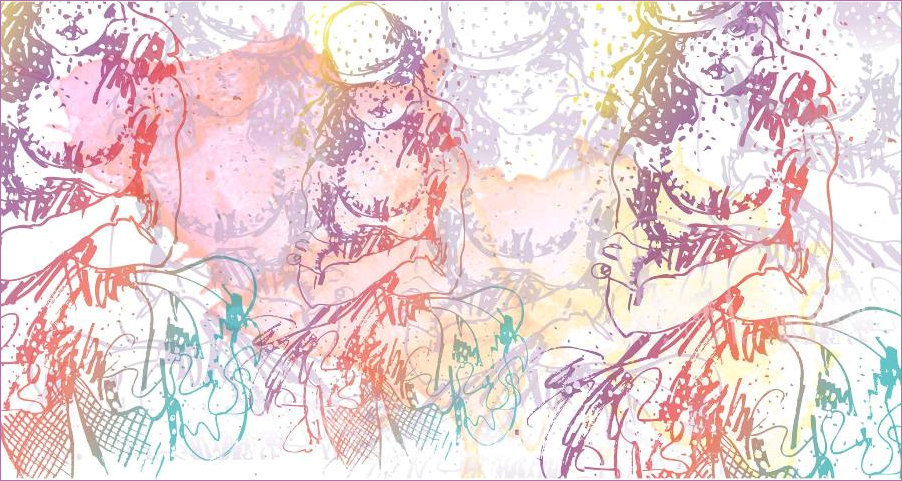
'Bovril' aids the return of 'Dad's Army'
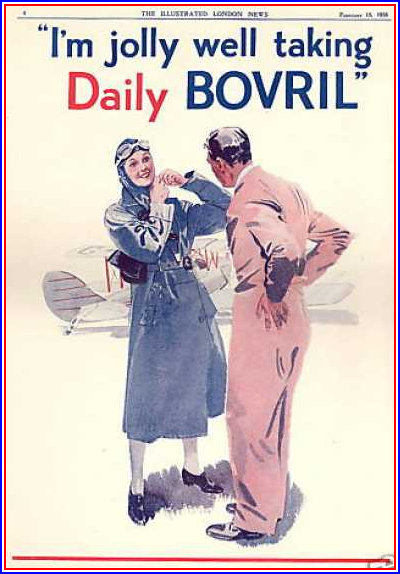
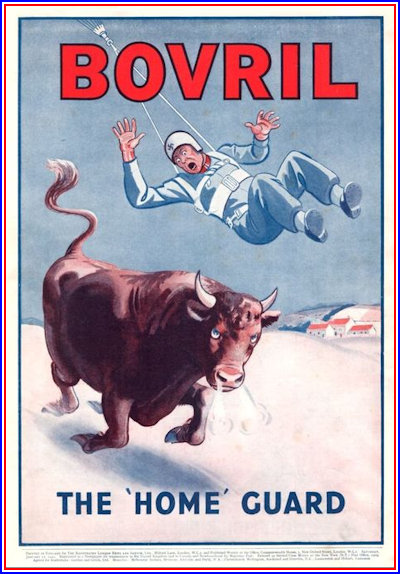
I thought it would be pertinent to add some authentic images of Bovril from the wartime years - The Lady Pilot was an advert in the Illustrated London News from 1939 and the Home Guard advert would have appeared in a similar publication after 1940

Bovril celebrating the re-make of the 'Dad's Army' film - beating Marmite for a change!
Casablanca
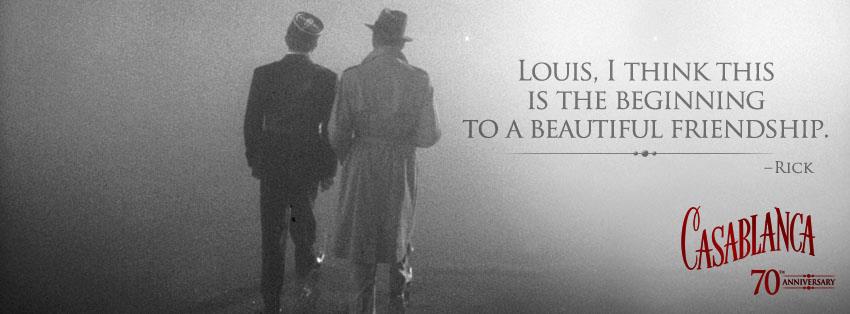
This image came later than the ones already featured in Films but as this scene is a particular favourite of mine, it deserves its place here.
This film celebrates its 70th Anniversary in 2012 but the iconography associated with the film can never be mistaken for anything else if these examples are anything to go by:
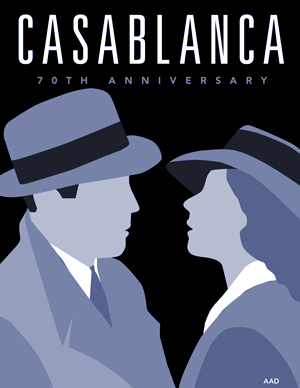
Eiffel Tower, Statue of Liberty & Big Ben
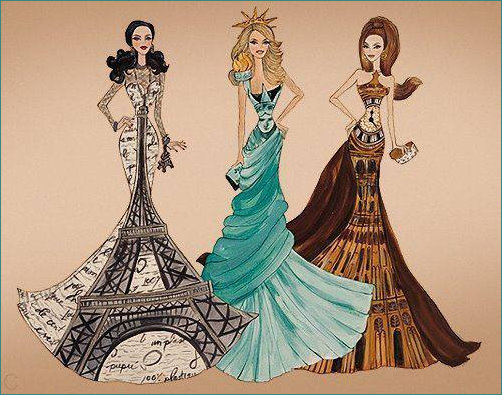
Bet you've never seen the Eiffel Tower, Statue of Liberty or Big Ben look like this before!
Eiffel Tower - 'Putting on the Glitz'

Well you couldn't really call it anything else could you? - The Telegraph Magazine dated 16th December 2017
Fleur-de-Lis
![]()
The Flower that gave France its Royal symbol! (And yes, by extension the international Guide and Scout organisations!) By Jon Guillaume, New Orleans Artist - image sourced from whereyart.net
Jingoism
Yes, I've called these 'jingoistic' and so they are in the nicest possible way! All Brits and ex-pats should be proud! Images sourced from Dreamstime and Getty
Page refreshed : 29th January 2021 (G)
